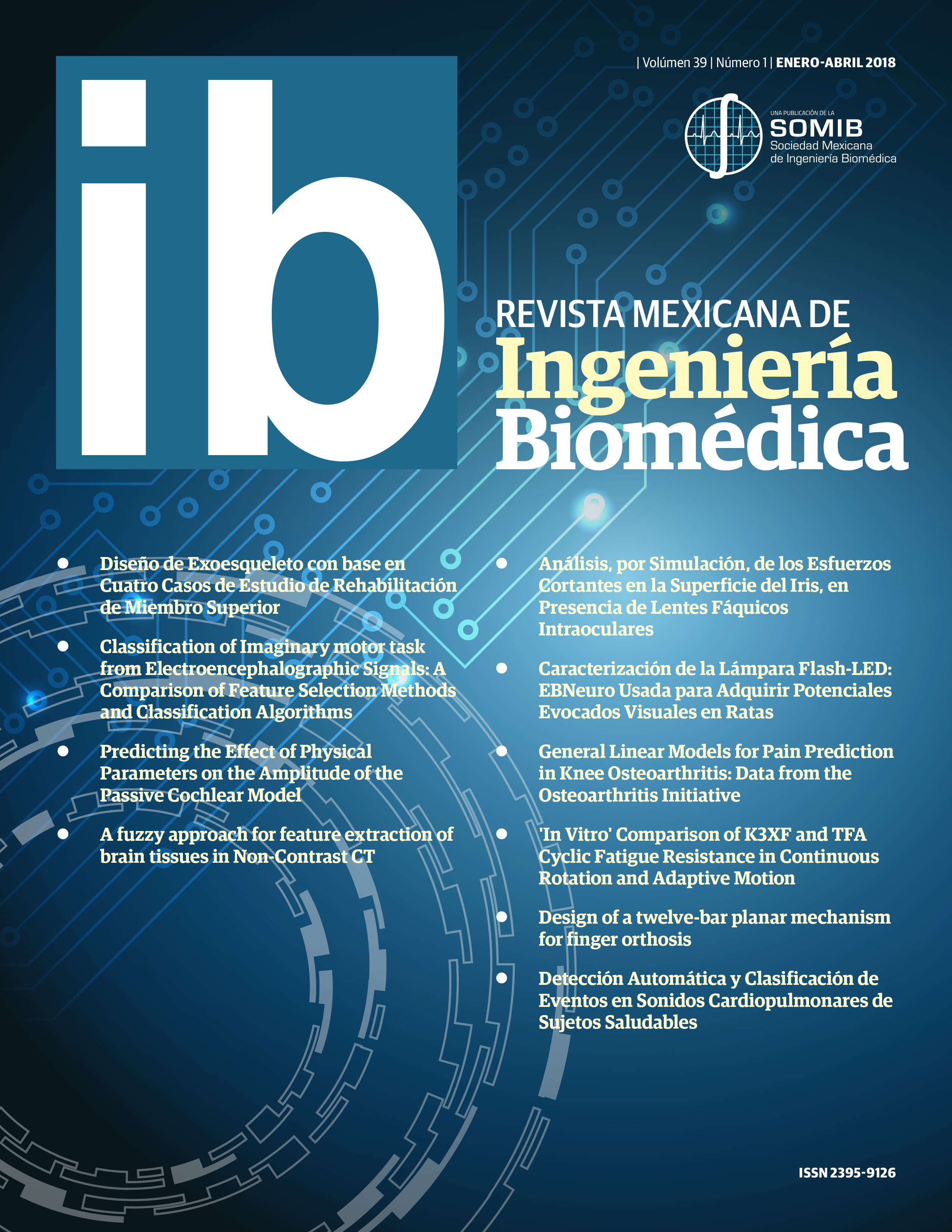General Linear Models for Pain Prediction in Knee Osteoarthritis: Data from the Osteoarthritis Initiative
DOI:
https://doi.org/10.17488/RMIB.39.1.3Keywords:
linear stochastic models, osteoarthritis, knee pain prediction, cross-sectional studies, radiological biomarkersAbstract
Knee pain is the most common and disabling symptom in Osteoarthritis (OA). Joint pain is a late manifestation of the OA. In earlier stages of the disease changes in joint structures are shown. Also, formation of bony osteophytes, cartilage degradation, and joint space reduction which are some of the most common, among others. The main goal of this study is to associate radiological features with the joint pain symptom. Univariate and multivariate studies were performed using Bioinformatics tools to determine the relationship of future pain with early radiological evidence of the disease. All data was retrieved from the Osteoarthritis Initiative repository (OAI). A case-control study was done using available data from participants in OAI database. Radiological data was assessed with different OAI radiology groups. We have used quantitative and semi-quantitative scores to measure two different relations between radiological data in three different time points. The goal was to track the appearance and prevalence of pain as a symptom. All predictive models were statistically significant (P ≤ 0,05), obtaining the receiving operating characteristic (ROC) curves with their respective area under the curves (AUC) of 0.6516, 0.6174, and 0.6737 for T-0, T-1 and T-2 in quantitative analysis. For semi-quantitative an AUC of 0.6865, 0.6486,and 0.6406 for T-0, T-1 and T-2. The models obtained in the Bioinformatics study suggest that early joint structure changes can be associated with future joint pain. An image based biomarker that could predict future pain, measured in early OA stages, could become a useful tool to improve the quality of life of people dealing OA.
Downloads
Downloads
Published
How to Cite
Issue
Section
License

This work is licensed under a Creative Commons Attribution-NonCommercial 4.0 International License.
Upon acceptance of an article in the RMIB, corresponding authors will be asked to fulfill and sign the copyright and the journal publishing agreement, which will allow the RMIB authorization to publish this document in any media without limitations and without any cost. Authors may reuse parts of the paper in other documents and reproduce part or all of it for their personal use as long as a bibliographic reference is made to the RMIB. However written permission of the Publisher is required for resale or distribution outside the corresponding author institution and for all other derivative works, including compilations and translations.








